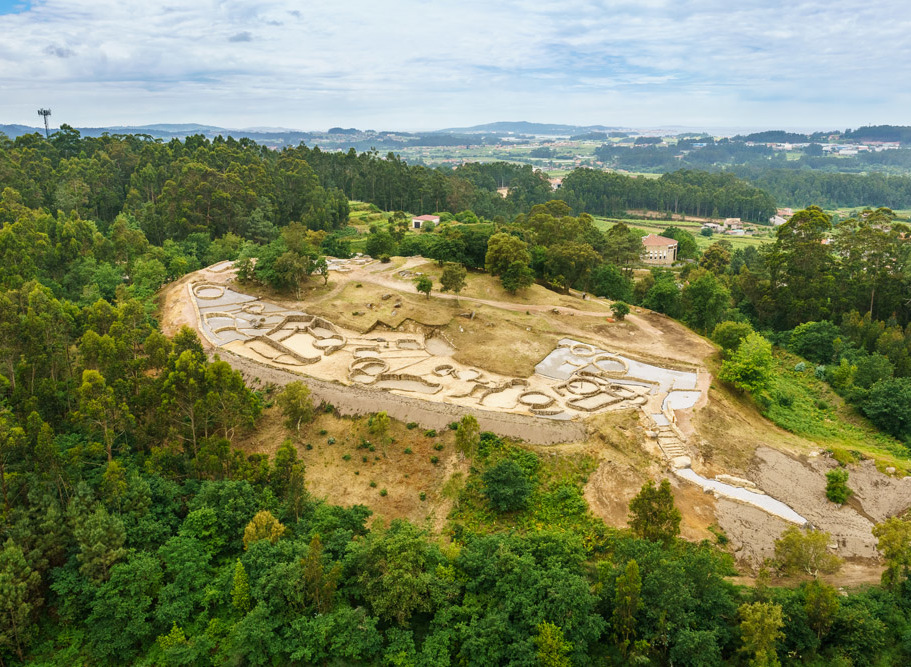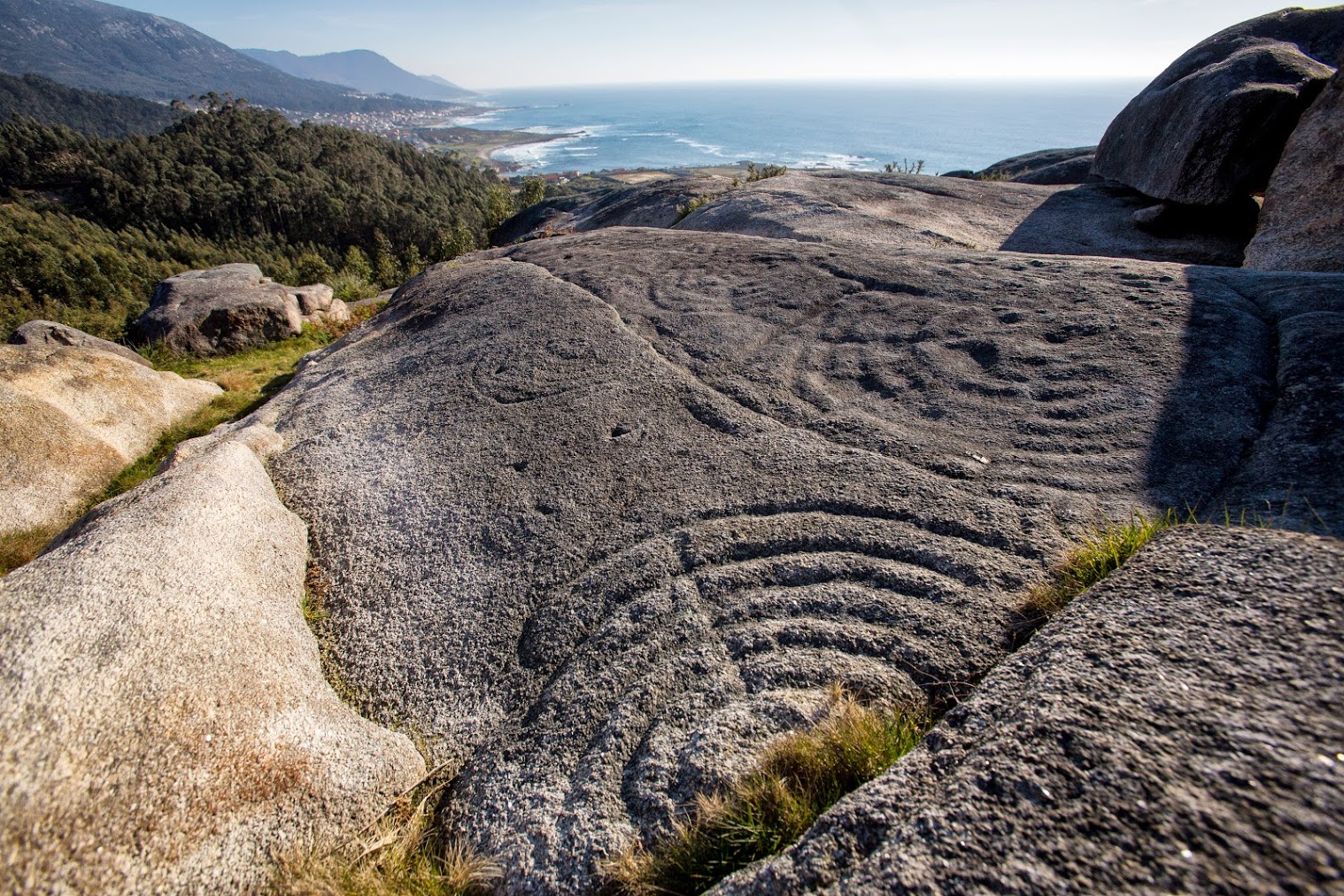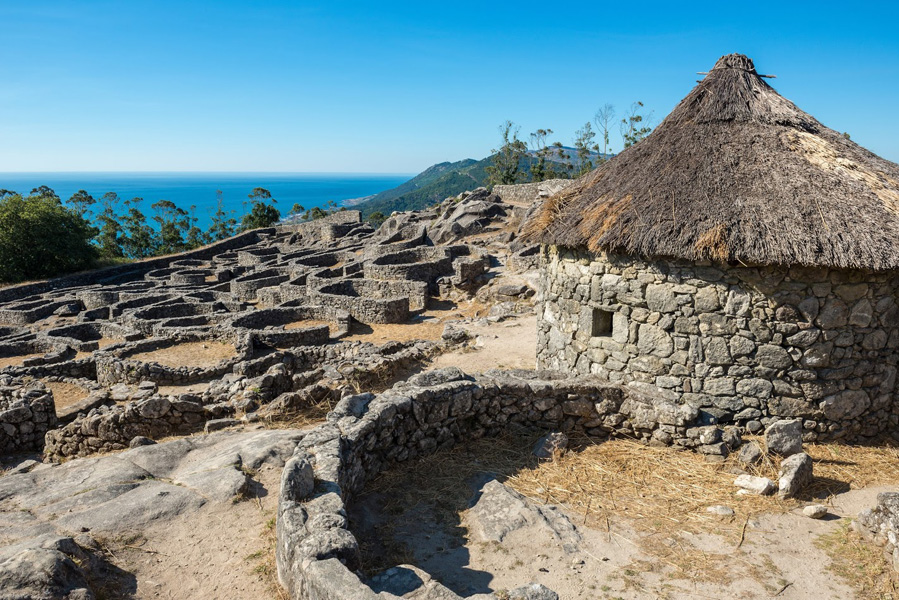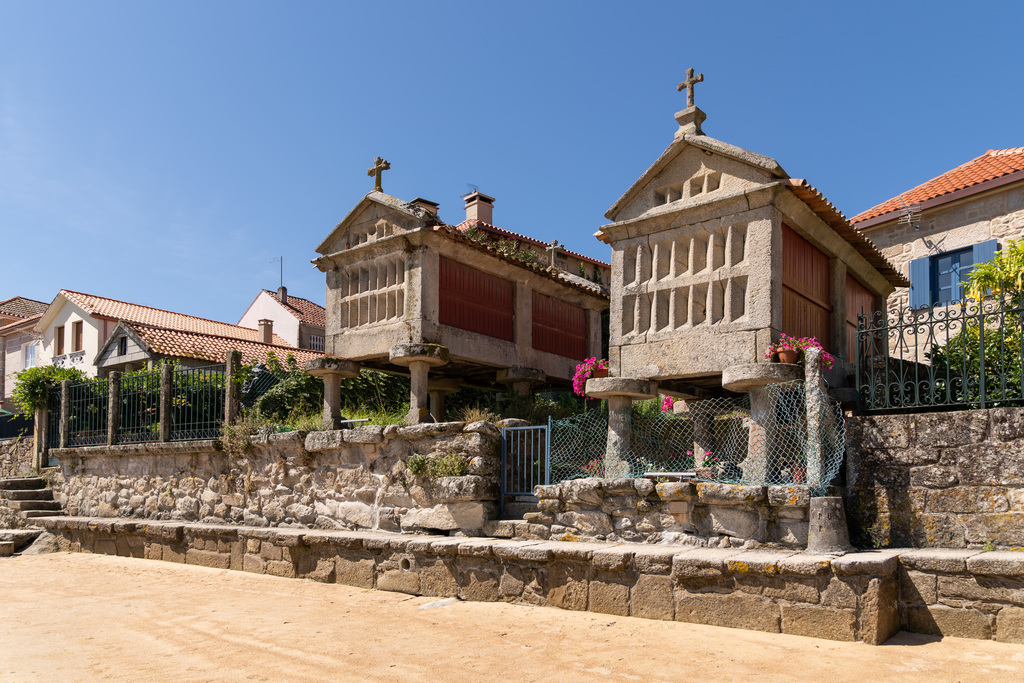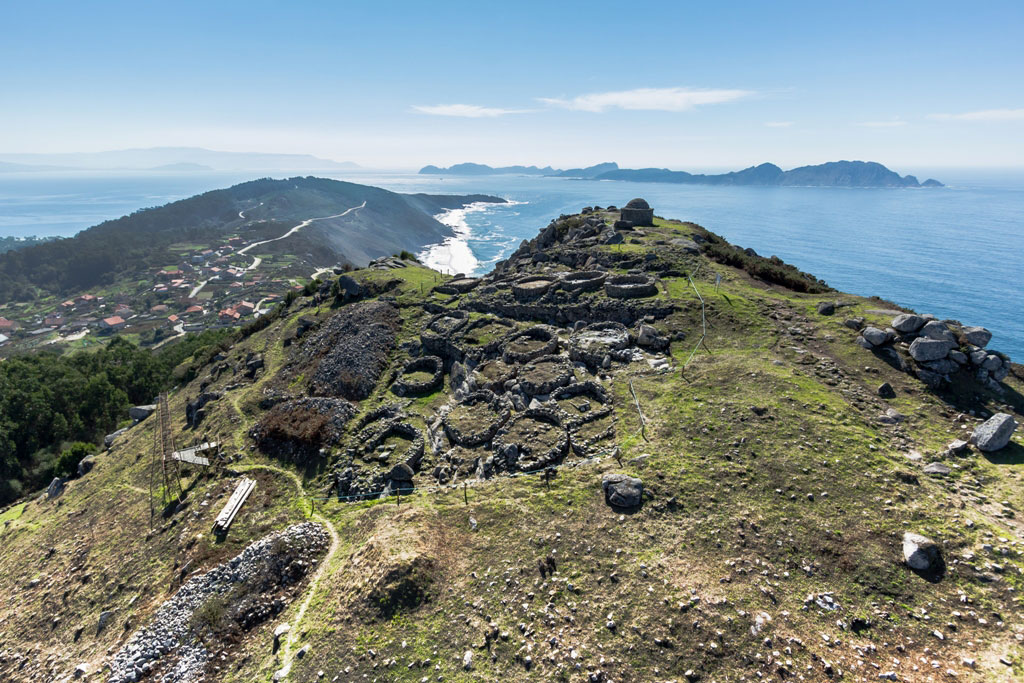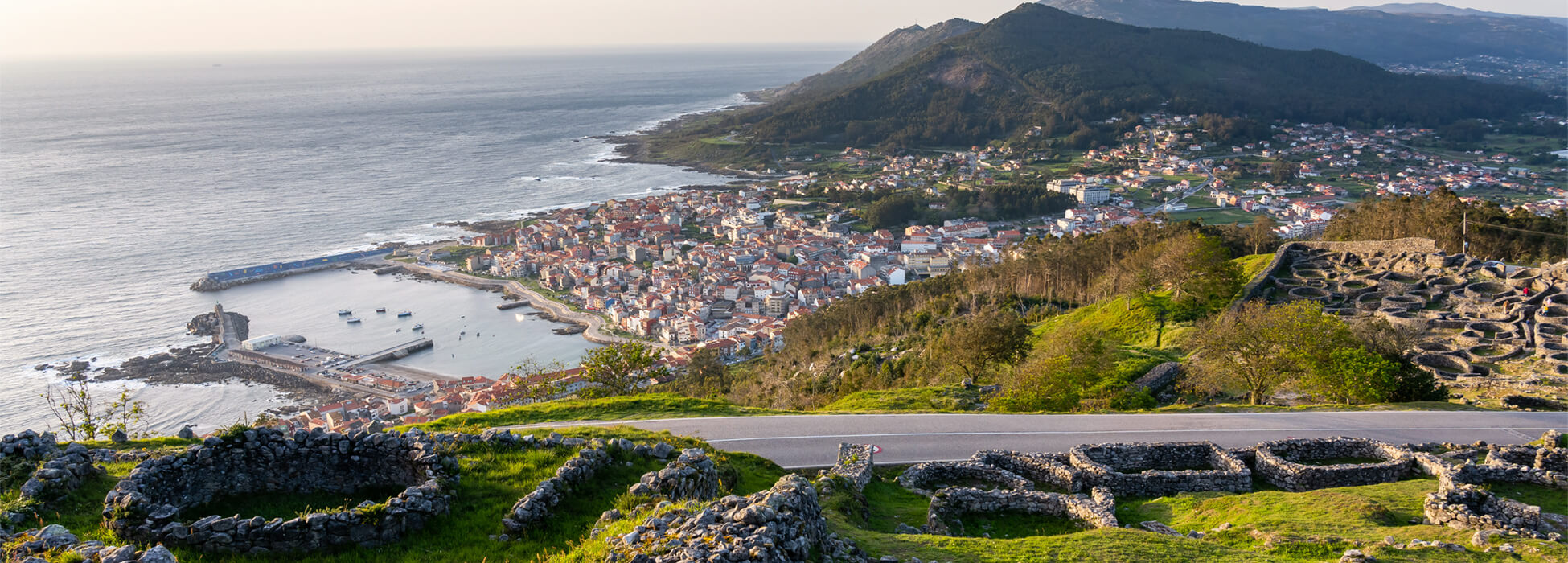
Archaeological wonders in legendary landscapes
The province of Pontevedra boasts a rich archaeological heritage. Its impressive pre-Roman hillforts, popularly known as castros, lying by the sea, and the remains of Roman settlements that have been preserved until the present day, take us on a journey back in time to discover the origin of its towns and cities
Nowadays, an attempt is being made to recover the rich historical and cultural heritage of the province of Pontevedra. Beyond the secrets they have kept and reveal to us, the inhabitants of the castros built their villages in high and well-positioned places. Today, they are exceptional viewpoints over the coast and the inland areas of this destination. These legendary landscapes are an invitation to delve into the origins of the towns in As Rías Baixas, from the early pre-Roman towns to the later Roman settlements.
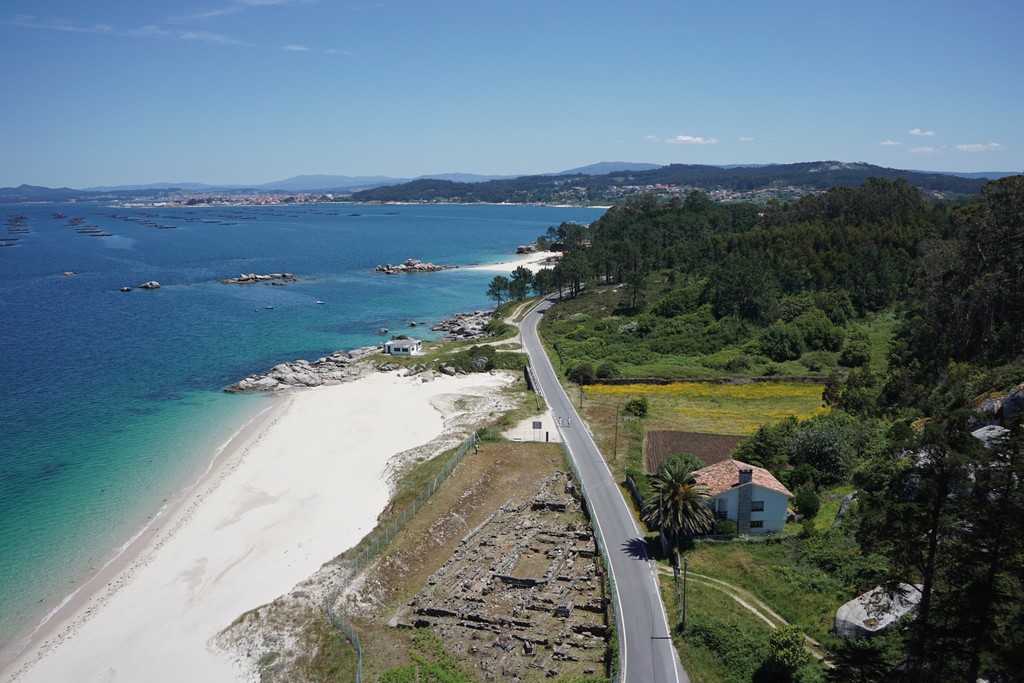
don´t miss ...
- Santa Trega
- Castrolandín
- O Facho
- Centro Salinae
Santa Trega is one of the best-preserved castros in Galicia. It boasts panoramic views over A Guarda and the Portuguese border. It dates from the 1st century BC to the 1st century AD and it was discovered by chance in 1913. There, today it is possible to visit two reconstructed houses and a museum. Other castros which are well worth a visit in Baixo Miño are thecastro Alto dos Cubos, in the town of Tui, and next stop is Vigo. In the last years, the city has made a great effort to recover the archaeological site of O Castro. Without leaving this city, one can visit the Sea Museum building, which houses the archaeological site of Punta do Muíño do Vento. And it is worth visiting the Salinae, the remains of an ancient salt factory, which is just before the gate to the Roman village of Toralla.
The best option is to drive to Cangas and then climb to O Facho Hill, where there is a settlement with stunning views over the archipelagos of Cíes and Ons.
Other castros which are well worth a visit are the castro of A Subidá, in the town of Marín, and the one of Alobre, in Vilagarcía de Arousa. It is recommended to visit Castrolandín, in the town of Cuntis.
Santa Trega is one of the best-preserved castros in Galicia. It boasts panoramic views over A Guarda and the Portuguese border
The pre-Roman settlers abandoned many castros after the Roman came. Then, they would head to new settlements near the coast or in valleys. In the region of O Salnés, a good option is to stroll around the archaeological sites of A Lanzada and Adro Vello, and then head to the town of Valga to learn more about the history of A Igrexa Vella “The Old Church”.
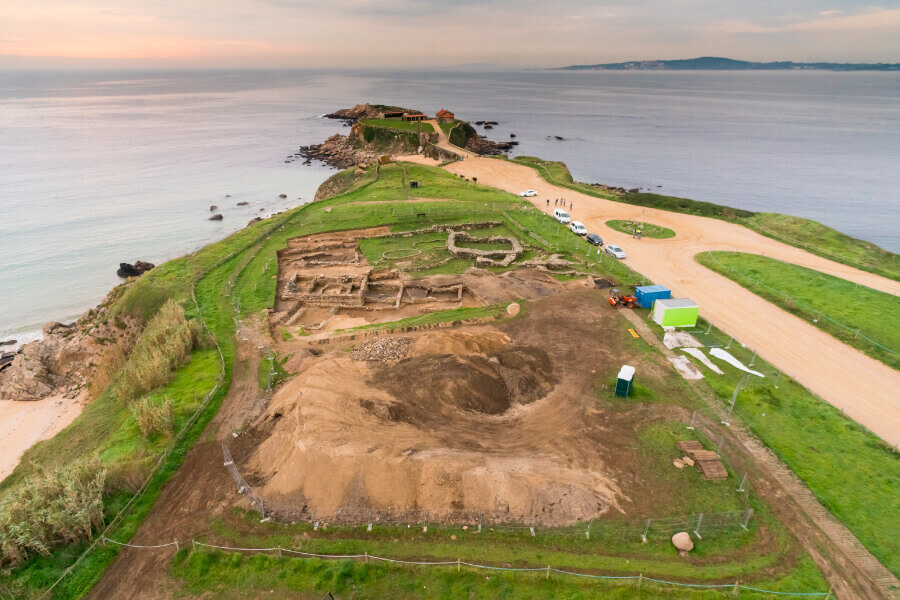
Halfway between Mediterranean and Atlantic
The artefacts found in the archaeological site of A Lanzada show that the province of Pontevedra was a strategic place in the commercial exchange between the Mediterranean and the Atlantic communities. Contrary to the common belief that Pontevedra was an isolated land, the findings proved that the province established contact with other cultures as early as the 6th century BC. As Rías Baixas used to be part of the long-distance trade routes controlled first by Carthaginians and then by the people from Gádir.









